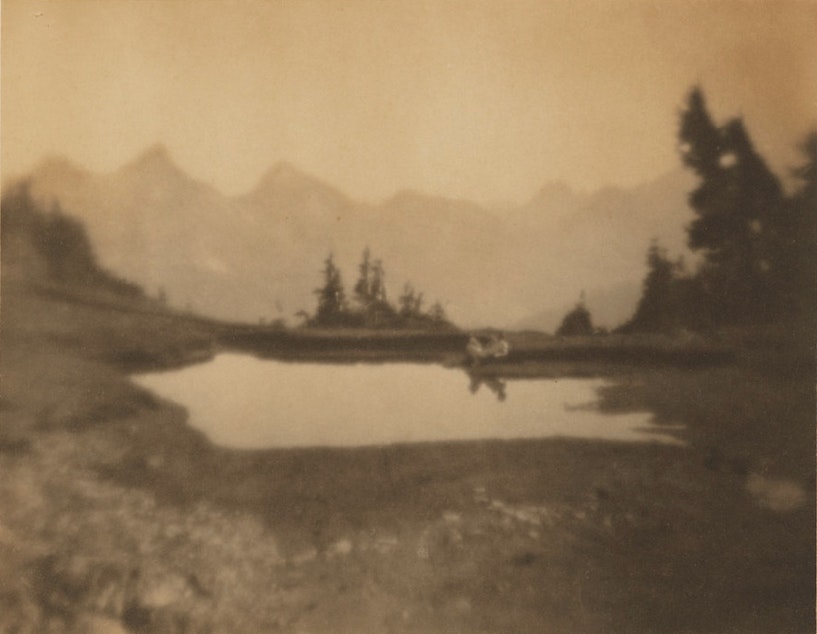At Seattle Art Museum, the art and influence of photographer Imogen Cunningham
Today, we hear about a major photography exhibition at Seattle Art Museum. It's a retrospective of Imogen Cunningham, one of the most influential women photographers in American history.
To learn more about Cunningham and her photos, KUOW’s Kim Malcolm spoke to Carrie Dedon, an assistant curator of modern and contemporary art at SAM.
Kim Malcolm: Many of Cunningham’s images are very clean and modern, but she was born in 1883. Tell us more about who she was.
Carrie Dedon: She was just a towering, iconic figure in American photography in the 20th century. She didn't slow down making work until her death in 1976, at the age of 93. This exhibition as a retrospective really shows the full range of that incredibly long and varied career, in which she was just constantly experimenting stylistically and technically, never stopped innovating, and was always pushing the boundaries, and really at the forefront of conversations and photography over those seven decades.

Some of us may not know that she grew up here in Seattle. Tell us a bit about her life here in the Pacific Northwest.
Sponsored
She spent the formative, early period of her life here in the Northwest. She was actually born in Portland, Oregon, and moved to Seattle with her family when she was very young. She attended school at UW. She wanted to be a photographer, but UW did not offer fine art classes at the time, so she studied chemistry as a way to learn the science behind the medium.
How was Cunningham influenced by growing up here in Seattle and the Pacific Northwest?
Her early images were really directly influenced especially by the landscape of the Pacific Northwest. In the early part of her career, she was working in this international, very popular style of photography called pictorialism, which was defined by these soft-focus images, mythological or biblical kind of staged scenes that were set in bucolic or romantic landscapes. The misty weather and rugged backdrop of the Pacific Northwest lent a unique perspective to that international style.
Then she moved to California. What happened?
In 1917, she moved to San Francisco and you see this real stylistic break away from the pictorialist mode. This was a time when a lot of West Coast photographers were thinking about a new modernist aesthetic. Photographers like Ansel Adams and Edward Weston were advocating for an emphasis on taking images, using photography to show the world as it was. You have this emphasis on clarity and precision of images, dramatic use of lighting, and a close crop on the subject matter. Cunningham, along with these other photographers, was at the forefront for advocating for this new aesthetic.
Sponsored
She developed out of that her best-known body of work, her botanical studies, largely due to her circumstances. She was a mother of three young children, and with the realities of that had to photograph things close to home. She turned her camera to flowers growing in her own garden, with a dramatic, modernist vision of these botanical studies.
Tell us about her impact and her legacy.
She was constantly evolving, constantly working with and meeting other artists, both within photography and beyond. She was an exceptionally vocal champion for women, especially in the arts, and especially in photography. As early as 1913, she published an essay titled Photography as a Profession for Women, in which she advocated for women's place within the field, and she was constantly mentoring and supporting other women artists.
You'll see in the exhibition, some works by other photographers who are contemporaries, but also by artists working in other mediums with whom she formed particularly close personal and professional relationships, like the great sculptor Ruth Asawa, and the fantastic dancer and choreographer Martha Graham. She had this impact within the field of photography, but within the broader spectrum of art history, both her images, but also her support and advocacy for women in the arts, was really crucial.
This interview has been edited for clarity.





